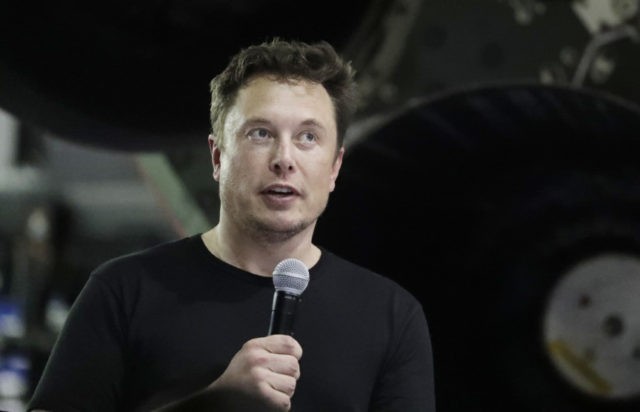Elon Musk’s electric-car manufacturing company Tesla has posted a profitable third quarter, but questions still remain surrounding the company’s future.
Tesla’s shares rose today following the posting of a net income of $311.5 million, a huge improvement on last year’s Q3 postings of a loss of $619.4 million. “We will focus even further on cost improvements while continuing to increase our production rate” during Q4, Tesla said in a statement. CEO Elon Musk told analysts on an earnings call that the demand for Tesla Model 3 cars was “probably on the order of anywhere from 500,000 to 1 million cars a year.” Tesla stated that: “This leads us to believe that the total market potential for Model 3 is larger than just the premium sedan.”
Morgan Stanley commented on the surprisingly positive Q3 earnings stating: “This quarter was different. The quality of cash flow was stronger than expected.” Goldman Sachs said in a statement: “We question if this is not as good as it gets from a near-term upside surprise for shares.”
Morgan Stanley analyst Adam Jonas issued a buy rating for Tesla stock, explaining his position he stated:
Tesla reports its strongest quarter in history by virtually every metric … Historically, Tesla has beat expectations on 1 or 2 line items while missing on profit or cash flow. This quarter was different … In our opinion, one of the most important debates for Tesla is when they can become self-sufficient on free cash flow, reducing the need to tap the equity market. 4Q guidance was not that specific but implies slightly lower gross margins and positive free cash flow (at least greater than the $230mm of convert debt they aim to pay down). The quality of cash flow was stronger than expected with working capital not benefitting as much as we had anticipated.
However, David Tamberrino of Goldman Sachs issued a sell rating on the electric-car manufacturers stock:
Another better than expected quarter from TSLA, with Automotive gross margins well above our and consensus forecasts on the back of improved manufacturing costs, reduced labor hours for the Model 3, and helped by a high variant/trim mix for the product … That said, we question if this is not as good as it gets from a near-term upside surprise for shares. The company has maintained that it designed and built the Model 3 with a target 25% gross margin and almost achieved that this quarter (albeit with a rich mix). However, with its own exposure to China tariffs on imported components and likely headwinds to mix as lower price point vehicles are offered, automotive gross margins likely compress sequentially into 4Q18 – and could see further mix pressure into 2019 as the US Federal Tax Credit begins to phase out for its vehicles … We raise our estimates, and our 12-month price target to $225 (from $200).
Analysts from the Bank of America, J.P. Morgan and UBS also posted sell ratings of Tesla’s stock.
One of the key areas that has boosted faith in Tesla’s stock is the company’s increased cash flow, however, this may not be an accurate way to measure the company’s success as recent reports claim that the company has engaged in a number of tactics to artificially boost cash flow.
An article from the LA Times outlines claims that Tesla has been taking payment for cars and delaying shipments for significant amounts of time, in order to boost the companies cash flow reports:
Raghunath Bansal, a psychiatrist from Fairfield, Calif., ordered a Model 3 online in July and didn’t hear back from Tesla for more than a week. He then went online again and changed his payment method from a bank loan to cash. “I got a call back the next day,” he said.
Bansal transferred $68,000 to Tesla from his bank account. Then began weeks of delivery dates set and later canceled, to the point where Bansal wondered whether he’d ever get his car. He finally received his Model 3 on Oct. 11.
“It’s an amazing car,” he said. “But the delivery process and the disorganization at the delivery center was even more amazing.”
Whatever the reasons for the delays, Tesla had Bansal’s $68,000 for most of the third quarter, in effect an interest-free loan. That boosted cash on hand and increased cash flow for the third quarter. And Bansal’s not alone. Tesla owner forums and social media are filled with customers — several of whom spoke with The Times — who paid full price for their cars, in cash, but experienced weeks-long delays in delivery into October. Tesla’s third quarter ended Sept. 30.
Anandhi Bharadwaj, an information systems professor in Atlanta, was persuaded to wire $60,000 to Tesla in August but said she didn’t receive the title until October. Michaela Bobeva, a dentist in Bellevue, Wash., said she paid $62,000 for a Model 3, two-thirds of it with a bank loan, in September. She rejected the car over what she said was a bad paint job. But Tesla sent her license plates and registration, and Bobeva said she is being billed for loan payments — despite not having the car.
Tesla also collects $2,500 nonrefundable deposits on all car orders. The company notes that most of its customers don’t have to pay full price until their car is ready for pickup.
Tesla stock is currently up eight percent at $311.60 a share.
Lucas Nolan is a reporter for Breitbart News covering issues of free speech and online censorship. Follow him on Twitter @LucasNolan_ or email him at lnolan@breitbart.com.

COMMENTS
Please let us know if you're having issues with commenting.